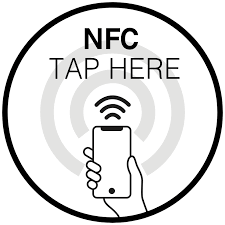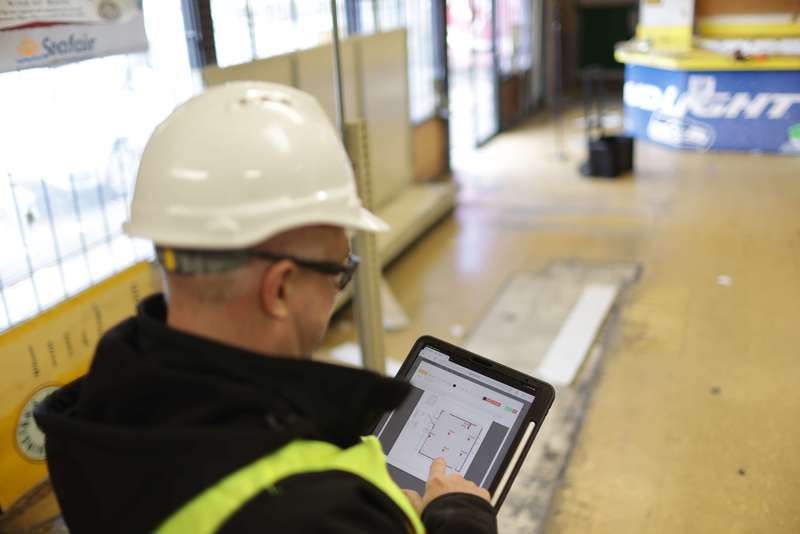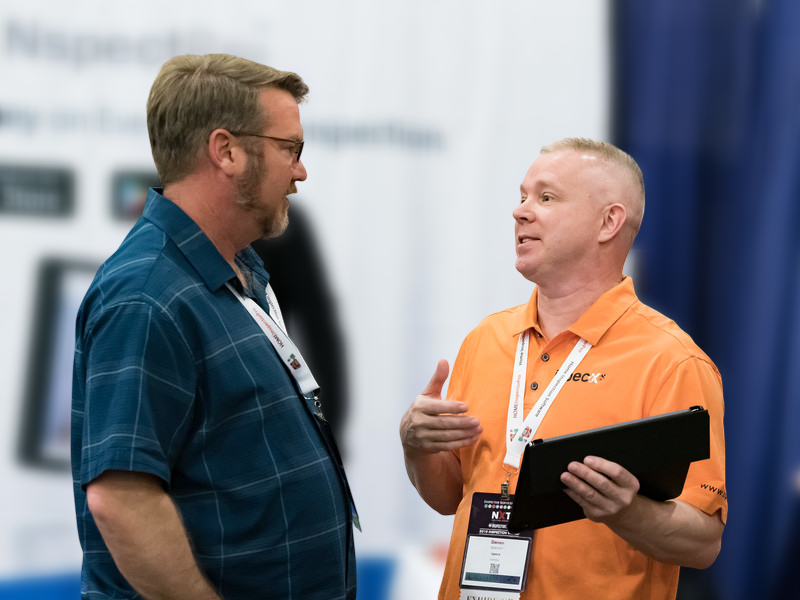Reporting Software for Asbestos meeting Australia and UK Compliance
ispecX software meets reporting requirements for USA, Austrial and UK
Variations / Special Survey Types
-
Pre-demolition survey: More invasive, possibly destructive sampling to access hidden materials (behind walls, under floors, roof cavities) to ensure no ACM is left inadvertently.
-
Path-of-construction (or limited) survey: Only survey the parts of the building that will be disturbed by renovation/construction.
-
Refurbishment surveys: Similar to path surveys but oriented around areas to be altered.
🧾 Asbestos Survey & Management Compliance Checklist — Australia | UK | USA
| Category | Australia (WHS Framework) | United Kingdom (CAR 2012) | United States (EPA / OSHA) |
|---|---|---|---|
| Primary Law / Regulation | Work Health and Safety Act 2011 + WHS Regs 2011 (or state equivalents) | Control of Asbestos Regulations 2012 (CAR 2012) | Toxic Substances Control Act (TSCA) – AHERA (40 CFR 763 Subpart E), ASHARA, & OSHA 29 CFR 1910.1001 / 1926.1101 |
| Regulatory Agencies | Safe Work Australia / State WHS Authorities (e.g. WorkSafe VIC, SafeWork NSW) | Health and Safety Executive (HSE) | U.S. EPA (identification, schools) + OSHA (workplace safety) + State EPA or Labor Depts |
| Core Duty / Legal Trigger | PCBU must identify & manage asbestos “so far as reasonably practicable.” | Dutyholder must “take reasonable steps” to determine location & condition of ACMs. | Public & private K-12 schools must inspect & manage ACM under AHERA; employers must protect workers from exposure (OSHA). |
| Survey Requirement | Not explicitly mandated, but required in practice to meet identification duty. | Mandatory for non-domestic premises and before refurb/demolition. | Mandatory in schools (AHERA) – Initial inspection & 3-year re-inspection + 6-month surveillance. For other buildings: required before renovation/demolition (NESHAP 40 CFR 61). |
| Survey Types | Management (non-intrusive) / Refurbishment or Demolition (intrusive). | Management / Refurbishment / Demolition (same structure). | AHERA Inspections for schools / Pre-Renovation or Pre-Demolition Surveys under NESHAP. |
| Surveyor Qualification | “Competent person” – trained & experienced (e.g. licensed assessor). | HSE-recommended UKAS-accredited organization (ISO 17020) / BOHS P402 qualified. | EPA-accredited Asbestos Inspector (certified under AHERA training 40 CFR 763 App C). |
| Sampling & Lab Analysis | NATA-accredited lab (PLM / PCM / TEM). | UKAS-accredited lab (ISO 17025). | NVLAP-accredited lab for PLM / TEM analysis (40 CFR 763 App E & F). |
| Asbestos Register / Inventory | Required for workplaces built before 2004; lists ACM location, condition, risk. | Required for non-domestic buildings & common areas. | AHERA Management Plan acts as register for schools; many states require inventories for other facilities via NESHAP/OSHA. |
| Management Plan Requirement | Required if ACMs found – details controls & review cycle. | Required under CAR 2012 Reg 4 – outline how ACMs will be managed. | Required for schools (AHERA) – includes inspection records, training, notification, & response actions. |
| Reinspection / Review Frequency | Every 5 years (min.) or sooner if disturbed or altered. | No fixed interval – annual or risk-based recommended. | 6-month periodic surveillance + 3-year reinspection (AHERA). |
| Residential Scope | Mainly applies to workplaces; private homes exempt unless commercial use. | Applies to non-domestic premises and common parts of flats. | No federal requirement for private homes unless renovation/demolition (NESHAP). Disclosure may apply during sale or rental. |
| Pre-Demolition Survey | Mandatory intrusive survey before demolition (WHS Reg 449). | Mandatory refurbishment/demolition survey before work (CAR Reg 5). | Mandatory inspection before renovation/demolition per NESHAP (40 CFR 61.145). |
| Survey Report Contents | Scope, methods, photos, sample results, risk ratings, register, AMP. | Detailed material & priority assessments, maps, photos, recommendations. | Sample locations, lab results, assessor credentials, response actions (AHERA). |
| Who Maintains Records | PCBU / Building Owner. | Dutyholder / Building Owner / Manager. | Local Education Agency (LEA) for schools; building owner for others. |
| Record Retention | ≥ 30 years for asbestos records. | ≥ 40 years. | ≥ 30 years (OSHA 1910.1001(m)); indefinitely recommended under AHERA. |
| Worker / Contractor Notification | Must be informed & given access to register before work. | Must be informed & given access to survey/register. | Must receive annual AHERA notifications (in schools) & OSHA hazard communication. |
| Removal Licensing | Class A (friable) / Class B (non-friable). | Licensed (asbestos) or non-licensed work per CAR Reg 8–11. | Federal & state contractor licensing (EPA/OSHA); abatement supervisors must be certified. |
| Penalties for Non-Compliance | Up to AUD $3 million (corporations). | Unlimited fines + imprisonment possible. | Civil penalties up to USD $37,500 per day (EPA); OSHA fines & criminal liability for willful violations. |
| Ban Date for Asbestos Use | 31 Dec 2003 (full ban). | 24 Aug 1999 (ban effective 2000). | No complete ban nationally (as of 2025) – some uses still permitted under TSCA risk evaluation process. |
| Reference Guidance | National Guide for Asbestos Surveys (ASSEA 2024); Code of Practice – How to Manage and Control Asbestos (2020) | HSG264 – Asbestos Survey Guide; ACOP L143 Managing and Working with Asbestos | EPA AHERA Guidance; NESHAP 40 CFR 61.145; OSHA 1910.1001 & 1926.1101; EPA Asbestos Model Accreditation Plan |
🔍 Key Comparative Notes
-
🇦🇺 Australia – Survey is implied by WHS duties but not named in legislation; five-year review rule is explicit.
-
🇬🇧 UK – Surveying and management are direct legal duties under CAR 2012; accreditation highly standardized.
-
🇺🇸 USA – Federal requirements split by sector: schools (AHERA), renovation/demolition (NESHAP), and worker protection (OSHA). No single “survey law” for all buildings.
-
🇺🇸 Important gap: The U.S. still allows certain asbestos uses under TSCA, unlike Australia / UK full bans.






 Estimating / scope of work / claims support
Estimating / scope of work / claims support






